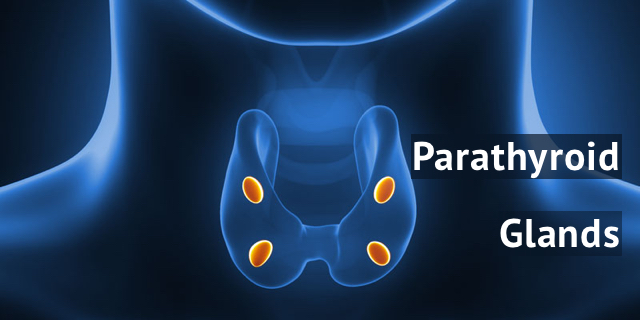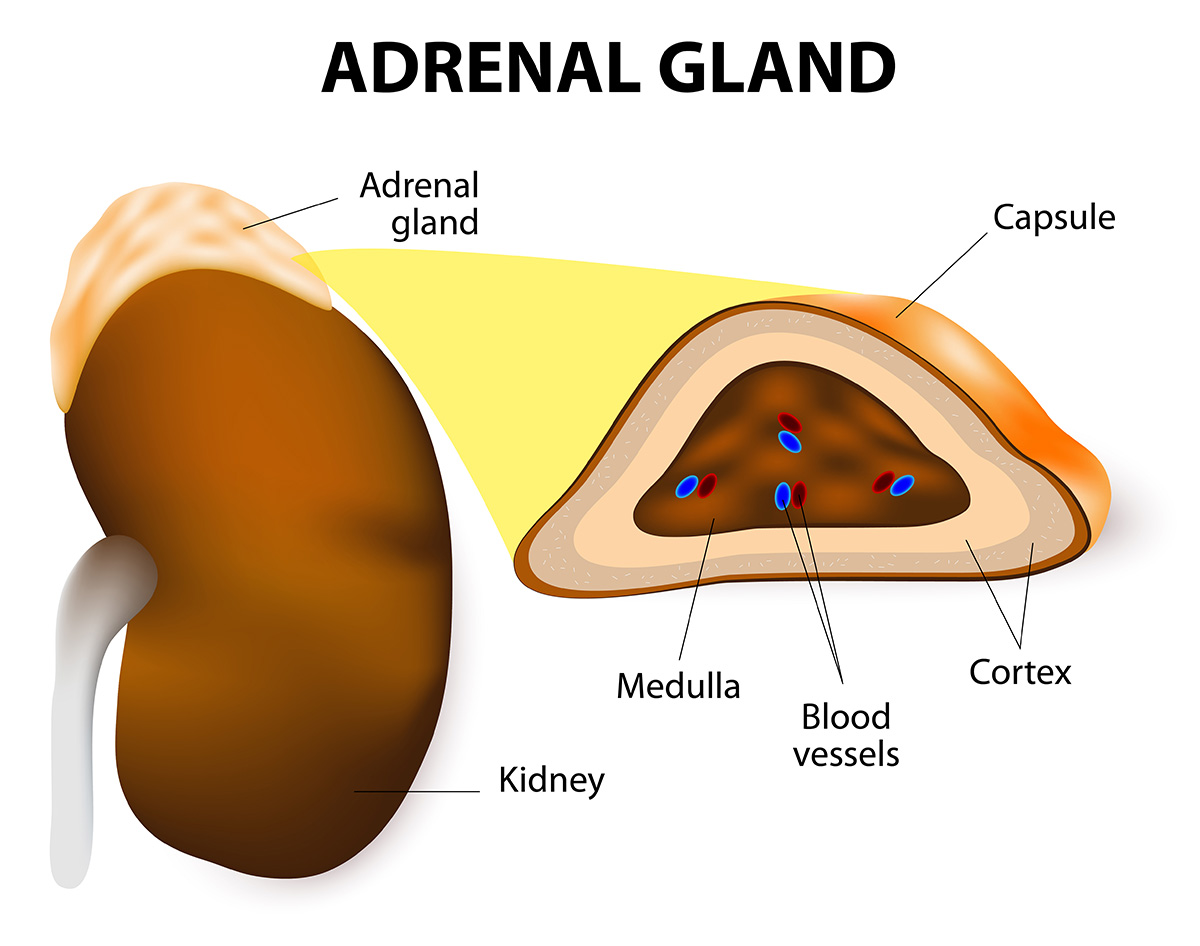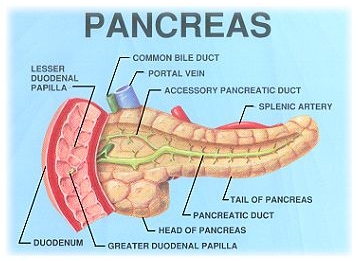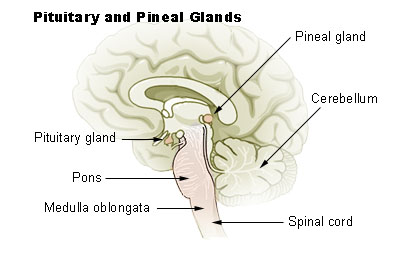ENDOCRINE SYSTEM
The endocrine system is a chemical messenger system comprising feedback loops of the hormones released by internal glands of an organism directly into the circulatory system, regulating distant target organs. In vertebrates, the hypothalamus is the neural control center for all endocrine systems. In humans, the major endocrine glands are the thyroid gland and the adrenal glands. The study of the endocrine system and its disorders is known as endocrinology. Endocrinology is a branch of internal medicine.
Glands that signal each other in sequence are often referred to as an axis, such as the hypothalamic-pituitary-adrenal axis. In addition to the specialized endocrine organs mentioned above, many other organs that are part of other body systems have secondary endocrine functions, including bone, kidneys, liver, heart and gonads. For example, the kidney secretes the endocrine hormone erythropoietin. Hormones can be amino acid complexes, steroids, eicosanoids, leukotrienes, or prostaglandins.
Glands
Pituitary gland
The pituitary gland hangs from the base of the brain by the pituitary stalk, and is enclosed by bone. It consists of a hormone-producing glandular portion of the anterior pituitary and a neural portion of the posterior pituitary, which is an extension of the hypothalamus. The hypothalamus regulates the hormonal output of the anterior pituitary and creates two hormones that it exports to the posterior pituitary for storage and later release.Four of the six anterior pituitary hormones are tropic hormones that regulate the function of other endocrine organs. Most anterior pituitary hormones exhibit a diurnal rhythm of release, which is subject to modification by stimuli influencing the hypothalamus.
Thyroid gland
The thyroid gland is located in the front of the neck, in front of the thyroid cartilage, and is shaped like a butterfly, with two wings connected by a central isthmus. Thyroid tissue consists of follicles with a stored protein called colloid, containing[thyroglobulin], a precursor to other thyroid hormones, which are manufactured within the colloid.The thyroid hormones increase the rate of cellular metabolism, and include thyroxine (T4) and triiodothyronine (T3). Secretion is stimulated by the thyroid-stimulating hormone, secreted by the anterior pituitary. When thyroid levels are high, there is a negative feedback that decreases the amount of Thyroid-stimulating hormone secreted. Most T4 is converted to T3 (a more active form) in the target tissues.

Parathyroid glands
The parathyroid glands, of which there are 4–6, are found on the back of the thyroid glands, and secrete parathyroid hormone,This causes an increase in blood calcium levels by targeting bone, the intestine, and the kidneys. The parathyroid hormone is the antagonist of calcitonin. Parathyroid hormone release is triggered by falling blood calcium levels and is inhibited by rising blood calcium levels.

Adrenal glands
The adrenal glands are located above the kidneys in humans and in front of the kidneys in other animals. The adrenal glands produce a variety of hormones including adrenaline and the steroids aldosterone and cortisol.It controls the behaviour during crisis and emotional situations. It stimulates the heart and its conducting tissues and metabolic processes.

Pancreas
The pancreas, located in the abdomen, below and behind the stomach, is both an exocrine and an endocrine gland. The alpha and beta cells are the endocrine cells in the pancreatic islets that release insulin and glucagon and smaller amounts of other hormones into the blood. Insulin and glucagon influence blood sugar levels. Glucagon is released when the blood glucose level is low and stimulates the liver to release glucose into the blood. Insulin increases the rate of glucose uptake and metabolism by most body cells.

Pineal gland
The pineal gland is located in the diencephalon of the brain. It primarily releases melatonin, which influences daily rhythms and may have an antigonadotropic effect in humans. [citation needed] It may also influence the melanotropes and melanocytes located in the skin.

Other hormone-producing structures
Many body organs not normally considered endocrine organs contain isolated cell clusters that secrete hormones. Examples include the heart (atrial natriuretic peptide); gastrointestinal tract organs (gastrin, secretin, and others); the placenta (hormones of pregnancy—estrogen, progesterone, and others); the kidneys (erythropoietin and renin); the thymus; skin (cholecalciferol); and adipose tissue (leptin and resistin).

Post a Comment